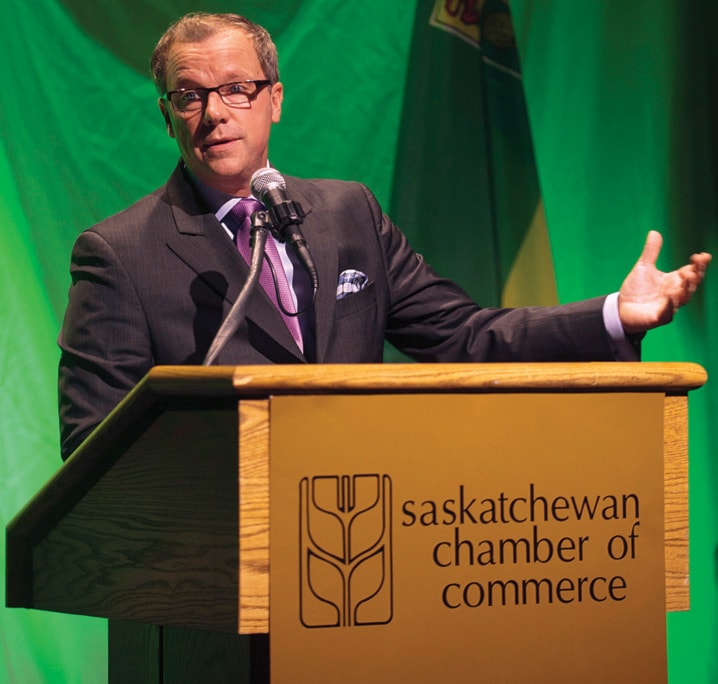SASKATOON — Saskatchewan is mapping out a road to prosperity that the opposition argues offers little but recycled ideas.
Premier Brad Wall has unveiled a long-term growth plan that talks about saving money from non-renewable resources, starting a new organization to build things such as roads through public-private partnerships and includes lowering the corporate business tax rate.
Saskatchewan’s incorporated business tax rate is high at 12 per cent, he said. Alberta and B.C. are at 10 per cent.
“They’re our greatest source of competition,” Wall told a luncheon crowd Tuesday in Saskatoon.
“So beginning with the next budget, we will over the next two years reduce our rate from 12 per cent to 10 per cent.”
Saskatchewan also plans to follow Alberta’s lead when it comes to saving money from non-renewable resources, such as oil and gas.
Wall said Peter MacKinnon, a former University of Saskatchewan president, will lead the Saskatchewan Heritage Initiative, which will look at ways to use non-renewable resource revenue. Alberta has a similar fund.
“We will pay the debt off in this province and hopefully soon and that’ll be a great day,” said Wall.
“But what about the day after? What should we do with these revenues for future generations that we think will be there because of the vast resources we have? That long view must also shape our purpose and our vision.”
Wall’s vision is outlined in the 64-page document entitled “Saskatchewan Plan for Growth: Vision 2020 and Beyond.”
It spells out six points that include investing in infrastructure, developing a skilled workforce and ensuring competitiveness.
On the infrastructure front, the province plans to take $150 million from its rainy day account, the Growth and Financial Security Fund, to set up a new organization to help build roads, bridges and other infrastructure.
The SaskBuilds Fund will drive infrastructure planning and financing, including public-private partnerships known as P3s.
Wall noted that Saskatoon and Prince Albert need new bridges, a highway bypass proposal in Regina is pegged at $500 and $700 million and there’s about $1 billion in water infrastructure needs.
“You can see these numbers are big,” he said.
“And if we rely on conventional methods of funding, of annual funding from the government, they won’t get done in a timely way to meet the challenges of growth, to sustain the growth in the province, and so we’re going to ask SaskBuilds to explore aggressively P3s.”
It’s not the first time the Saskatchewan Party government has pondered P3s. It created a P3 secretariat after taking office in 2007, but it was later folded.
Interim Opposition NDP Leader John Nilson called the growth plan “a rehash of old ideas,” referring to the failed P3 secretariat.
Nilson said the growth plan doesn’t offer anything for families in terms of housing or education.
He said the references to increasing the aboriginal high school graduation rate were too brief.
Nilson was also disappointed with plans for the heritage fund — which was something the NDP proposed in the provincial election in 2011.
He criticized the decision to wait to start the fund until after the debt is fully paid.
“They say they’re going to pay off the debt at $80 million a year. That means it’ll be 2060 before they start the heritage fund,” he said.
“I’ll be almost 110 years old. I plan to live that long, but I think it’s a long time for Saskatchewan people to wait.”
